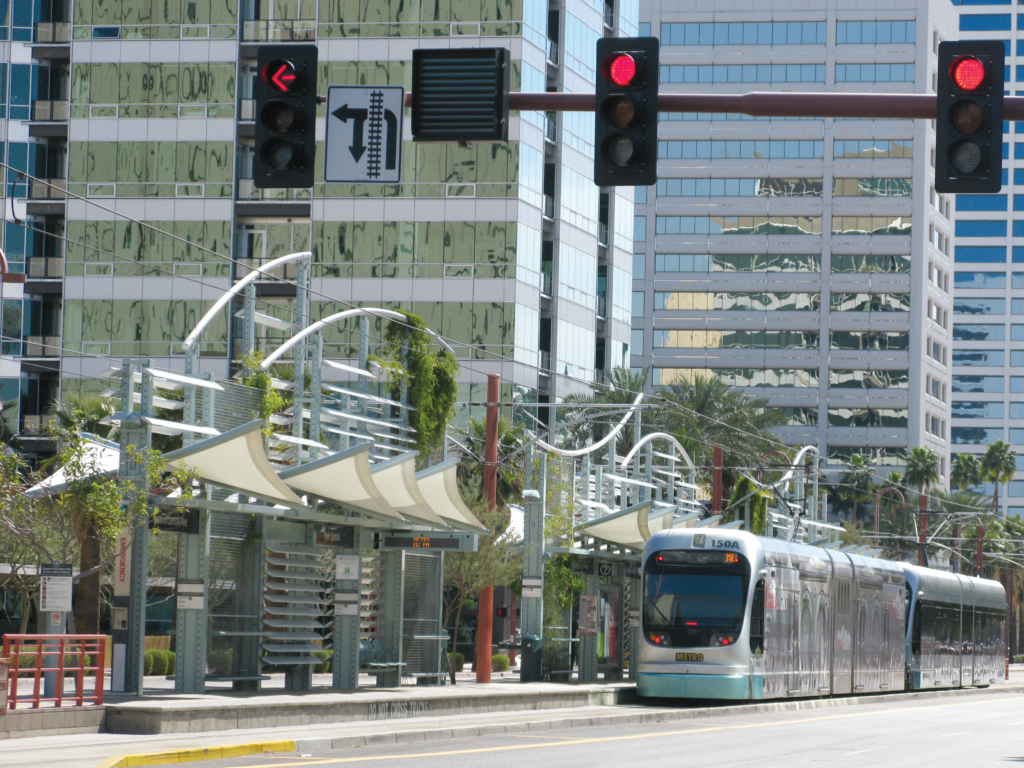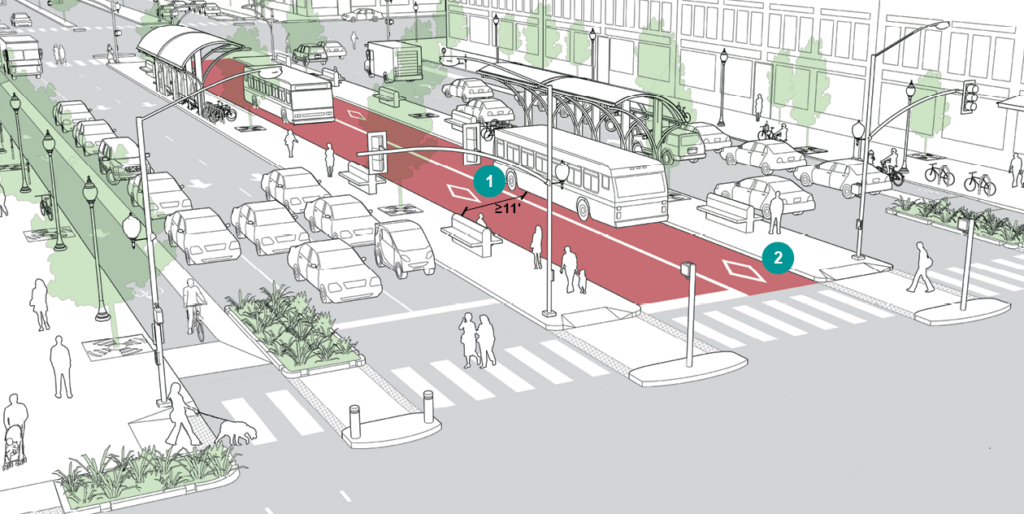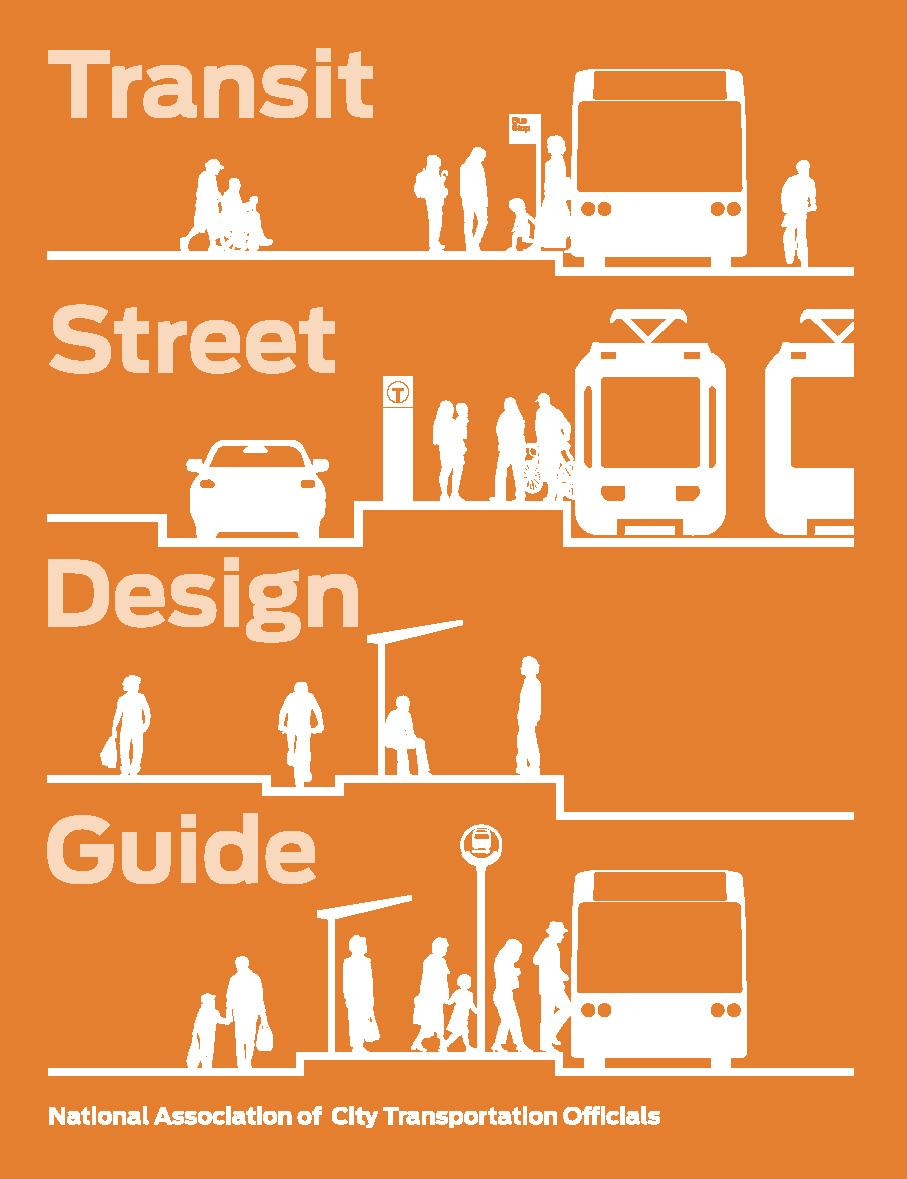Application
Dedicated median bus lanes are typically applied on major routes with frequent headways or where traffic congestion may significantly affect reliability. Median bus lanes are applied along the centerline of a multilane roadway and should be paired with accessible transit stops in the roadway median where needed.
Benefits & Considerations
Dedicated median bus lanes eliminate conflicts with potential drop-offs, deliveries, or illegal parking along the roadway edge.
Intersections require turning provisions for vehicles to avoid conflicts with the through movements of the transit vehicles. Enforcement is necessary to ensure their effectiveness.
Installation should be coordinated with land use changes that maximize economic growth potential. Setback guidelines and other land use regulations should be tailored to create a more inviting pedestrian realm.

Turn signals ensure that vehicles do not block transit ways.
Critical

1The minimum width of a median bus lane is 11 feet per direction.
2Dedicated bus transit lanes require median boarding islands in the roadway at each stop. These stops must be fully accessible and lead to safe, controlled crosswalks or other crossings.1
For dedicated median bus lanes, BUS-ONLY pavement markings (MUTCD 3D-01) emphasize the lane and deter drivers from using it.
Dedicated lanes should be separated from other traffic with solid single or double white stripes, at a minimum.
Recommended
Red colored paint should be applied to emphasize dedicated median bus lanes and deter drivers from using them.
Separation of the dedicated median bus lane with soft barriers (i.e., rumble strips) and/or hard barriers (concrete curbs) should be considered to reduce encroachment from moving vehicles.
Optional
Dedicated median bus lanes should have complementary rapid transit elements, such as off-board fare payment and transit signal priority.
- For additional information about ADA requirements at transit facilities, please see:
“Bus Stops and Terminals,” in Accessibility Guidelines for Buildings and Facilities (Washington, D.C.: Access Board: 1998) ↩︎

Transit Street Design Guide
Learn more about transit streets in NACTO’s Transit Street Design Guide.